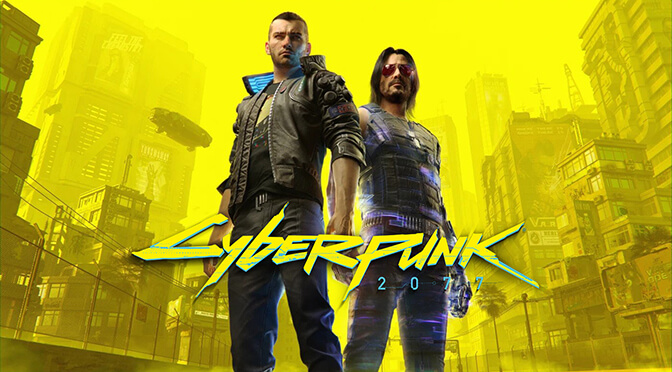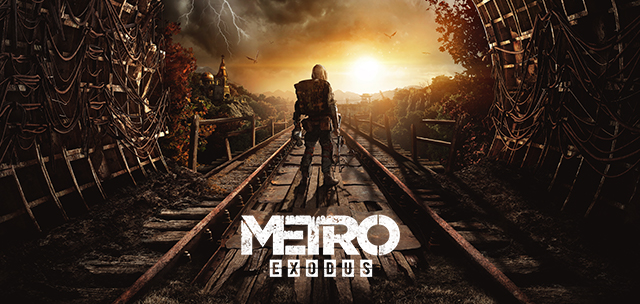We had a little Polish place around and the pierogi were on the menu too. Quite tasty. I'm a bit surprised about the cold cuts and meat-less tradition of XMas feast there. That isn't a thing at all here and I had impression that sausages and meat are quite popular in Poland.My wife makes cracking traditional Polish pierogi dumplings...she got the recipe from some Polish friends. My favourite ones are the saurkraut and mushroom...but I like all the different varieties from savoury to sweet
Turkey for Xmas dinner is an American fashion that invaded Britain quite a while ago...since the traditional Xmas meal was always goose. Turkey and the mass factory breeding for consumption made Xmas meals cheaper and why turkey is now more common than goose at the table....we still have goose for Xmas dinner in our house, never did like factory farmed turkey much. We also follow the European tradition of having Xmas dinner on Xmas eve rather than Xmas day...it was a Scottish thing as well until being fashionably English rather than uphold our own traditions and festivals changed it all
You are using an out of date browser. It may not display this or other websites correctly.
You should upgrade or use an alternative browser.
You should upgrade or use an alternative browser.
Game Discussions Cyberpunk 2077 - official gameplay
- Thread starter rootsrat
- Start date
That's probably me hitting the language barrier. Christmas EVE is for fasting, the next two days are for feastingWe had a little Polish place around and the pierogi were on the menu too. Quite tasty. I'm a bit surprised about the cold cuts and meat-less tradition of XMas feast there. That isn't a thing at all here and I had impression that sausages and meat are quite popular in Poland.
Ooh, fish is popular here too. But the fasting is quite unique - my family comes from quite catholic tadition too - it must be a cultural thing. Friday is likely meatless in tradition, fish of course isn't meat, especially in easter fasting and particularly on Good Friday. My cousin can sing a song about this since he warmed up makkaroni with meat sauce once on Good Friday.
Wow, the devs are getting death threats over a game delay. Seriously people, it's just a game. No wonder the real problems of the world can't get sorted if people are getting this upset over entertainment.
You stop being surprised by these things when a realisation hits that most people are just plain dumb. It's a frightening prospect and one that is difficult to wrap your head around properly, but it's the harsh truth. And in the recent years the stupidity became dangerous forming anti-science movements, even more in the recent pandemic.Wow, the devs are getting death threats over a game delay. Seriously people, it's just a game. No wonder the real problems of the world can't get sorted if people are getting this upset over entertainment.
Not a surprise, but nice to have confirmation:

 www.dsogaming.com
www.dsogaming.com

NVIDIA confirms that Cyberpunk 2077 Ray Tracing will work on any DXR-compatible GPU
As Brian Burke, NVIDIA PR Gaming Technology, Esports & Consumer VR, claimed, Cyberpunk 2077 will be using DXR and will work on all DXR-compatible GPUs.
 www.dsogaming.com
www.dsogaming.com
Nope, it's a gimmick. Nothing groundbreaking. Cheap HR-VR would be.I think i'm the only one who doesn't give 2 figs about ray tracing.
In fact I find it hard to believe that we've come to a point graphically where RT is the top marketing headline for next gen cards.
Cheap(er) VR would be groundbreaking indeed. I'd argue that VR is priced only slightly higher than I'd expect myself, problem is the uptake from the developer market is very low which I feel really decreases the value as a consequence.
VR which is less clunky more accessible as a tech alongside developer uptake would be truly groundbreaking.
VR which is less clunky more accessible as a tech alongside developer uptake would be truly groundbreaking.
Cheap(er) VR would be groundbreaking indeed. I'd argue that VR is priced only slightly higher than I'd expect myself, problem is the uptake from the developer market is very low which I feel really decreases the value as a consequence.
VR which is less clunky more accessible as a tech alongside developer uptake would be truly groundbreaking.
WMR? I think the Windows Mixed Reality headsets are exactly what you described.
Half the price of the "big boys", in-helmet tracking (no need for expensive tracking beacons and complicated setup - just circle your gaming area with the headset in your hand and you're good to go), fully compatible with SteamVR, etc.
I can't praise them enough.
Have to agree. It's a gimmicky thing.
Nope, it's a gimmick.
Good looking shadows are no gimmick.
Standard shadow maps are often a glaring weak point in graphical fidelity/image quality. One look at Elite: Dangerous should be enough to convince most of us of that.
More plausible global illumination and reflections aren't a bad thing either...but the performance cost can still be pretty steep here.
VR which is less clunky more accessible as a tech alongside developer uptake would be truly groundbreaking.
I do agree with this.
Personally, I think VR will be a fairly narrow niche until HMDs are wireless and lose about 90% of their current mass.
Good looking shadows are no gimmick.
Standard shadow maps are often a glaring weak point in graphical fidelity/image quality. One look at Elite: Dangerous should be enough to convince most of us of that.
More plausible global illumination and reflections aren't a bad thing either...but the performance cost can still be pretty steep here.
I do agree with this.
Personally, I think VR will be a fairly narrow niche until HMDs are wireless and lose about 90% of their current mass.
Fidelity is overrated. Gameplay is more important.
Graphical fidelity serves gameplay.
Yeah, it's not a gimmick - it's a trade off. To get things like shadows and reflections you used to fake them with math and draw them separately because it was too expensive to simulate the light. Now cards are getting powerful enough to do that simulation so it's cheaper to not bother with the fakery and you get better results. It's just a change in the tech enabling new (better) ways of doing things. Not very exciting since you essentially do the same thing it's just a change in method.
You'd have to make an example how raytracing does.Graphical fidelity serves gameplay.
You'd have to make an example how raytracing does.
All those light-based visual cues that we take for granted, that are extremely limited in most games because it's been too costly simulate, that's where ray tracing has the most gameplay potential. Stealth and detection are the most obvious aspects, and even very conservative uses of ray tracing could benefit here. Simply being able to have accurate shadows would dramatically increase detection ranges, as well as allow for forms of concealment and subterfuge, that would be difficult to implement any other way.
Realistic lighting, or at least a plausible abstraction of it, is also a prerequisite for AI visual systems that behave plausibly. Even the best NPC AI we currently have in first-person titles cannot behave plausibly because the simulated sensory inputs they have don't resemble our own. Often the same characters will seem to have a preternatural awareness in many situations, while being impossibly blind in others. Personally, I've always been a big fan of stealth games, and games with stealth aspects, but the best examples in this genre have glaring problems with AI, and even multiplayer examples suffer due to the inability to render realistic scenes.
At a basic level, it's not really much different from how VR can improve gameplay...both improve visual fidelity, allowing more, and more accurate, information about a game scene to reach us in an intuitive manner. A second view port allows stereoscopic vision and depth perception. Light that behaves as light should actually behave allows it to be used in the same way it's used out of game.
Last edited:
That makes sense, but not every game is a 1st person game or relies on realistic depiction for player decisions. A strategy game e.g. doesn't need such fidelity. I often find the animations go wasted either because of scale and pacing.All those light-based visual cues that we take for granted, that are extremely limited in most games because it's been too costly simulate, that's where ray tracing has the most gameplay potential. Stealth and detection are the most obvious aspects, and even very conservative uses of ray tracing could benefit here. Simply being able to have accurate shadows would dramatically increase detection ranges, as well as allow for forms of concealment and subterfuge, that would be difficult to implement any other way.
Realistic lighting, or at least a plausible abstraction of it, is also a prerequisite for AI visual systems that behave plausibly. Even the best NPC AI we currently have in first-person titles cannot behave plausibly because the simulated sensory inputs they have don't resemble our own. Often the same characters will seem to have a preternatural awareness in many situations, while being impossibly blind in others. Personally, I've always been a big fan of stealth games, and games with stealth aspects, but the best examples in this genre have glaring problems with AI, and even multiplayer examples suffer due to the inability to render realistic scenes.
At a basic level, it's not really much different from how VR can improve gameplay...both improve visual fidelity, allowing more, and more accurate, information about a game scene to reach us in an intuitive manner. A second view port allows stereoscopic vision and depth perception. Light that behaves as light should actually behave allows it to be used in the same way it's used out of game.
That makes sense, but not every game is a 1st person game or relies on realistic depiction for player decisions. A strategy game e.g. doesn't need such fidelity. I often find the animations go wasted either because of scale and pacing.
I certainly play games that don't rely on graphics to depict a scene (hell, some don't have graphics at all), but I would also expect the utility of graphical fidelity to be clear in a title like Cyberpunk 2077.
You'd have to make an example how raytracing does.
Standing outside a building with the doors and windows open in an RPG. You usually can't see a damn thing until you step through the door and it all magically lights up, which is totally unrealistic.
This gives a better explanation:

Metro Exodus Enhanced With NVIDIA RTX Ray Traced Effects – See Them In Action In Our Exclusive Tech Video
Ray Traced Global Illumination and Ray Traced Ambient Occlusion increase immersion and enhance image quality on GeForce RTX graphics cards. Learn how and see them in action in this article.
www.nvidia.com
